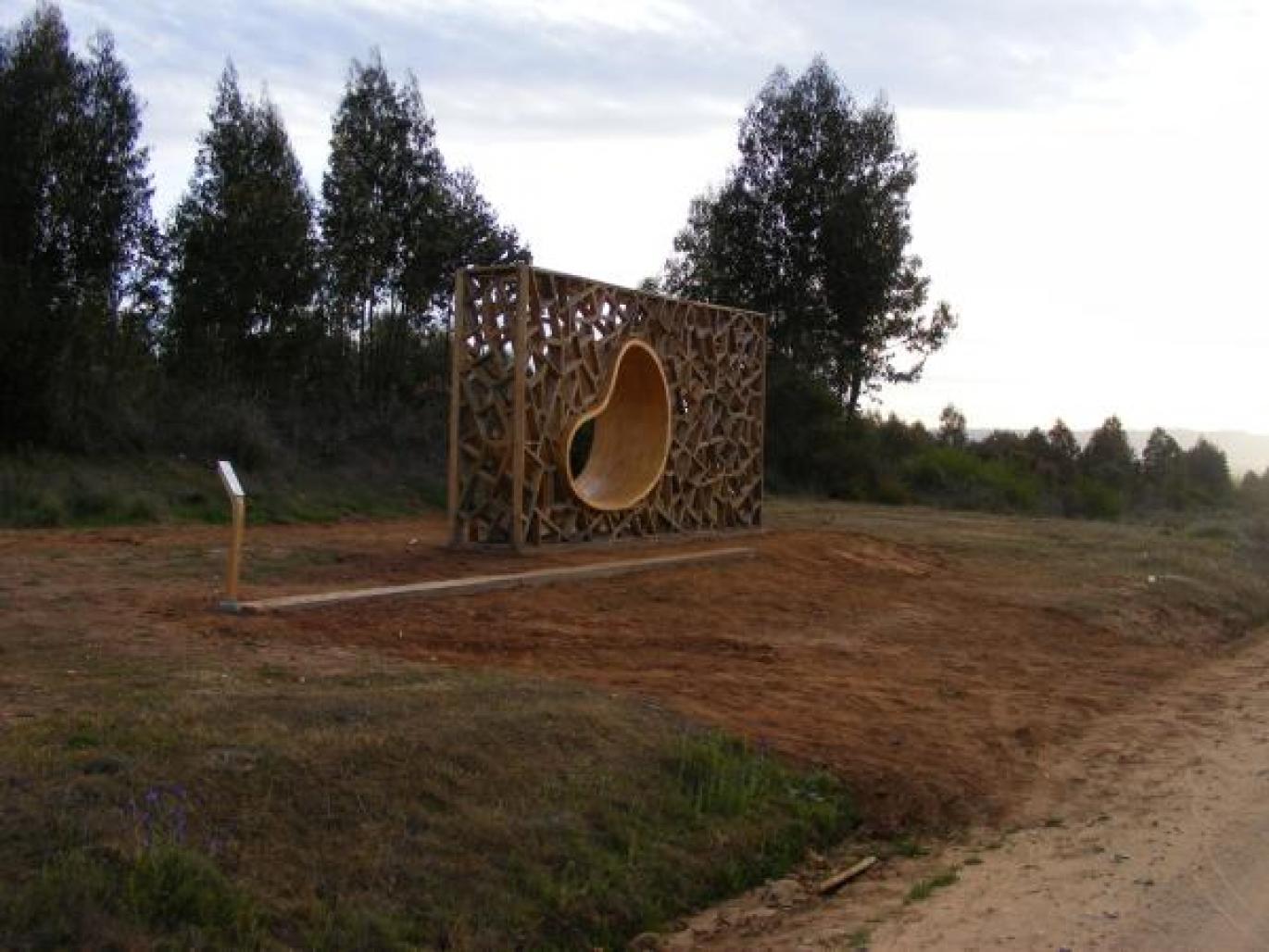Landmark: Touristic Rural circuit, Drylands, Chile.
School of Architecture, Universidad de Talca, Chile.
Architects: Ronald Hernández - Marcelo Valdes - Osvaldo Véliz
This work is the outcome of the process by which obtained their Architect´s diploma at the School of Architecture, Universidad de Talca in Chile. It involved all phases from Design and management to actually building a work of architecture which contributes to the public.
“Landmark…” Traces a route through the coastal mountain range which runs along the Pacific Ocean on the west, and the Central Valley on the east, using existing ancient paths that are the only infrastructure for connectivity in this area called drylands. 7 modules are built along the route, each of them performig as a device for orientation and resting areas for tourists. A landmark is created through the presence of each module, located in points where the route changes, or crosses a path, defining a new territory.
Beyond being a guide, each landmark creates conditions for a short rest, gives the tourist the possibility to get in touch with people living in the sorroundings, and defines a sort of public space for those people to meet.
The material used for the modules is selected in a way to give back to the region the wood that is produced through forestry in the area. Keeping a balance between costs and material, is decided to use pieces of wood, leftover by industries located in the sorroundings, commonly used to fire up the heaters.
The dimension of that pieces, the bigger is 50 cm. long, is taken as a condition for design. Thus, the structure of the box {named as Bräckzen}, is shaped as an irregular web, built out of small wooden modules that doesn´t go over 16 cm lentgh.
In all, 3.300 small modules were made to build the structures, with an average of 13.600 cuts.
At the center of each box, a furniture piece is positioned {named as Störken}, which defines the inhabitable space. Each of this pieces is placed in a way that relates to the function is going to serve, depending on the location of the module along the route.
It is built out of small pieces of wood, glued together and shaped to obtain the necesary curvature for comfort.
In all, 10.300 pieces were needed to build the furniture pieces, and an amount of nearly 41.200 cuts.
……………………………………………………………………………………………………………………
2007
2007



.jpg)





.jpg)
